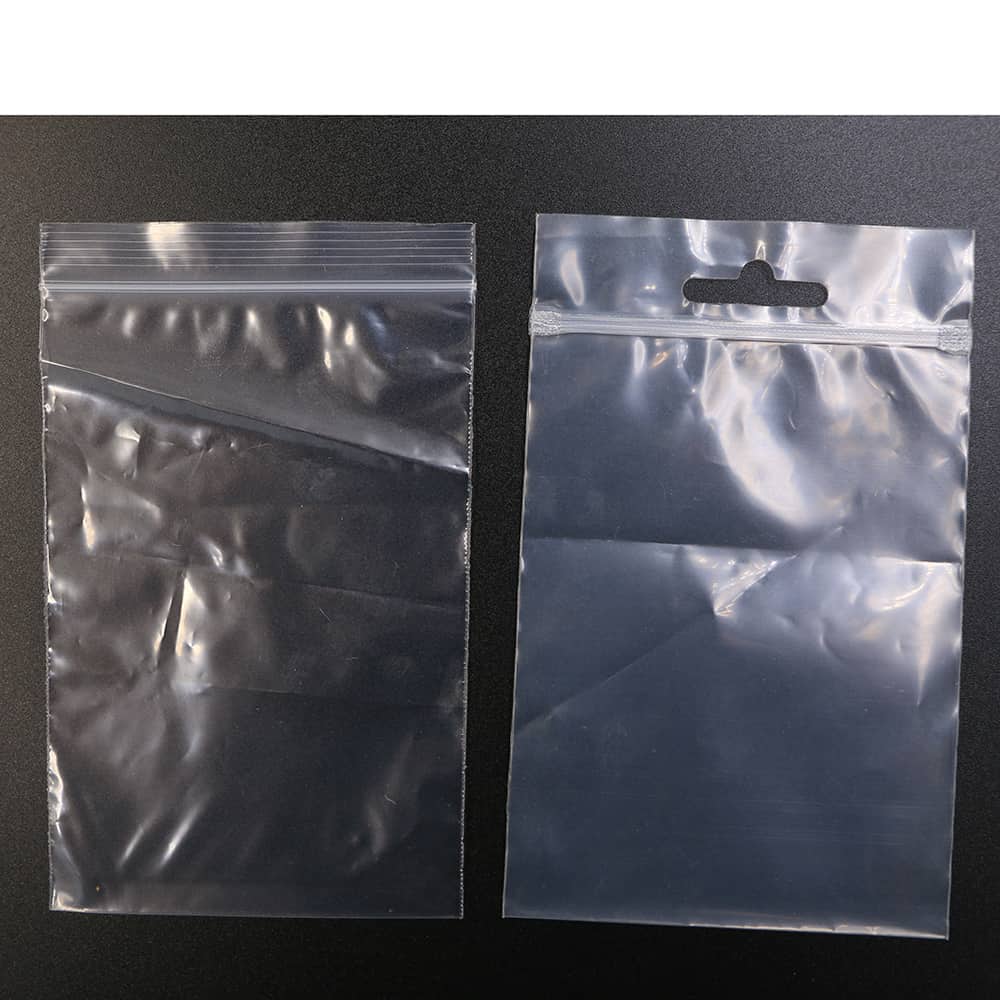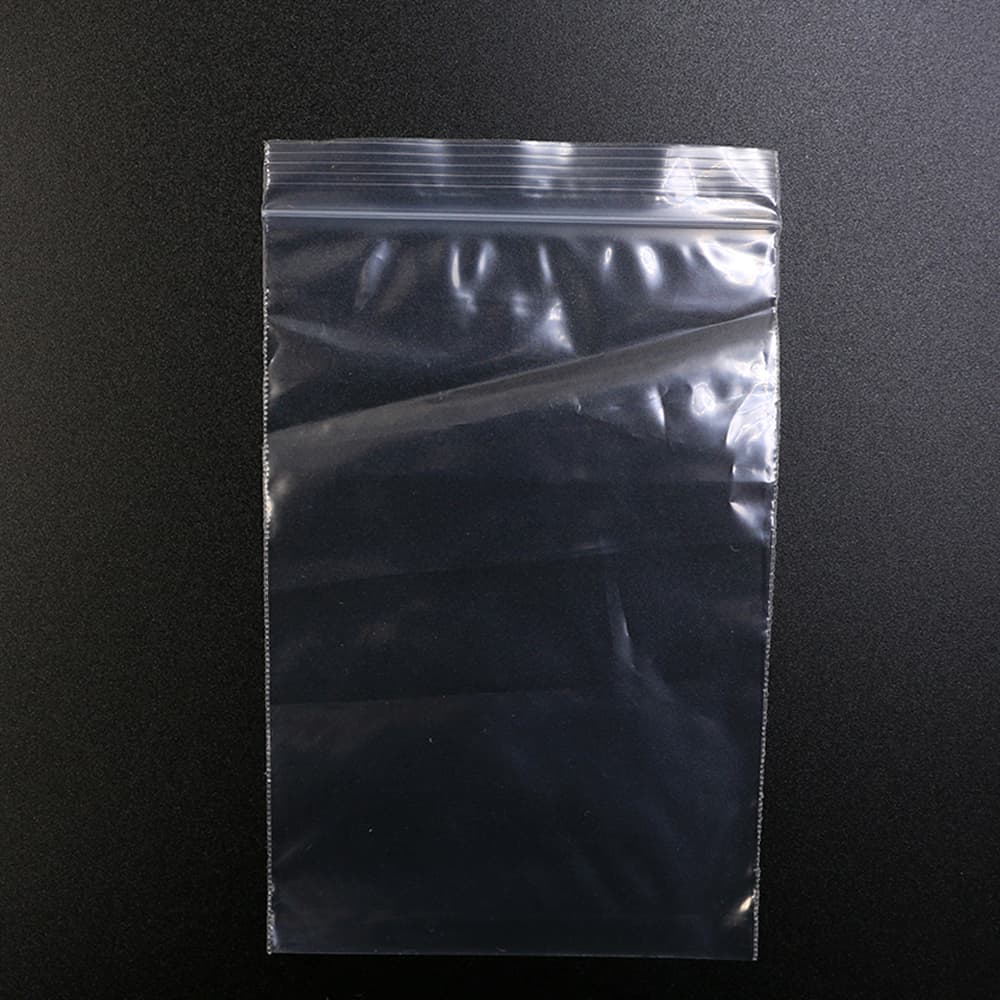PVC packaging bag
Polyvinyl chloride (PVC packaging bag), the main ingredient is polyvinyl chloride, bright color, corrosion resistance, strong and durable, due to the addition of plasticizers, anti-aging agents and other toxic auxiliary materials in the manufacturing process to enhance its heat resistance, toughness, ductility, etc., its products generally do not store food and medicine. It is a well-loved, popular and widely used synthetic material in the world today. Its global usage is the second highest among all synthetic materials.

Chemical and Physical Properties:
Rigid PVC is one of the most widely used plastic materials. PVC is actually a vinyl polymer, and its material is an amorphous material. In practical use, PVC materials often add stabilizers, lubricants, auxiliary processing agents, pigments, impact resistance agents and other additives. It has non-flammability, high strength, weather resistance and excellent geometric stability. PVC is very resistant to oxidizing agents, reducing agents and strong acids. However, it can be corroded by concentrated oxidizing acids such as concentrated sulfuric acid and concentrated nitric acid and is not suitable for contact with aromatic hydrocarbons and chlorinated hydrocarbons.
The melting temperature of PVC is a very important process parameter during processing. If this parameter is not appropriate, it will lead to the problem of material decomposition. The flow characteristics of PVC are rather poor and its process range is very narrow. In particular, high molecular weight PVC materials are more difficult to process (such materials are usually added with lubricants to improve flow characteristics), so small molecular weight PVC materials are usually used. The shrinkage rate of PVC is quite low, generally 0.2~0.6%.

Typical use:
Polyvinyl chloride has outstanding characteristics such as abundant raw materials (petroleum, limestone, coke, salt and natural gas), mature manufacturing process, low price, and wide range of uses. It has become the second largest general-purpose resin in the world after polyethylene resin, accounting for 29% of the world’s total consumption of synthetic resins. PVC is easy to process and can be processed by molding, lamination, injection molding, extrusion molding, calendering, blow molding, etc. Polyvinyl chloride is mainly used in the production of artificial leather, film, wire sheathing and other plastic soft products, water supply pipes, household pipes, house wall panels, commercial machine shells, electronic product packaging, medical equipment, speedboat fenders, and can also produce plates, Plastic hard products such as doors, windows and valves.
PVC can be divided into soft PVC and hard PVC. Among them, hard PVC accounts for about 2/3 of the market, and soft PVC accounts for 1/3. Soft PVC is generally used for the surface of floors, ceilings and leather, but because soft PVC contains softeners (this is also the difference between soft PVC and hard PVC), it is easy to become brittle and difficult to store, so its scope of use is limited. Hard PVC does not contain softeners, so it has good flexibility, easy to form, not easy to be brittle, non-toxic and pollution-free, and has a long storage time, so it has great development and application value. Hereinafter referred to as PVC. Soft PVC is mostly used to make vacuum plastic film for surface packaging of various panels, so it is also called decorative film and adhesive film, which is used in many industries such as building materials, packaging, and medicine. Among them, the building materials industry accounts for the largest proportion, accounting for 60%, followed by the packaging industry, and several other small-scale application industries.

Production methods:
Simply put, an aqueous solution of salt is chemically decomposed under the action of an electric current. This process produces chlorine, caustic soda and hydrogen. Refining, cracking petroleum or gasoline produces ethylene. When chlorine and ethylene are mixed, dichloroethylene is produced; dichloroethylene can be converted to produce chlorinated vinyl, which is the basic building block of polyvinyl chloride. The polymerization process links chlorinated vinyl molecules together to form PVC chains. The PVC produced in this way is in the form of a white powder. It cannot be used alone, but can be mixed with other ingredients to create many products.
Chlorinated vinyl was first synthesized in the laboratory of Justus von Liebig in 1835. Polyvinyl chloride was synthesized by Baumann in 1872. But it wasn’t until the 1920s that the first commercial products of PVC were produced in the United States, and large-scale production in Europe did not begin within the next 20 years. PVC has flame retardant (flame retardant value above 40), high chemical resistance (resistance to concentrated hydrochloric acid, 90% sulfuric acid, 60% nitric acid and 20% sodium hydroxide), mechanical strength And the advantage of good electrical insulation. However, its heat resistance is poor, the softening point is 80 °C, and it begins to decompose and discolor at 130 °C, and precipitate HCl.
Characteristics and molding characteristics of PVC:
Specific gravity: 1.38 g/cm3, molding shrinkage rate: 0.6-1.5%, molding temperature: 160-190 °C. Features: excellent mechanical properties and electrical properties, strong acid and alkali resistance, good chemical stability, but low softening point, suitable for making thin plates, wire and cable insulation layers, seals, etc.
Molding characteristics:
1. Amorphous material with low hygroscopicity and poor fluidity. To improve flow and prevent air bubbles, the plastic can be pre-dried. The casting system of the mold should be thick and short, the gate section should be large, and there should be no dead corners. The mold must be cooled and the surface chrome plated.
2. Due to its corrosive and fluid characteristics, it is best to use special equipment and molds. All products must be added with different types and quantities of additives as required.
3. It is very easy to decompose, and it is easier to decompose when it is in contact with steel and copper at a temperature of 200 degrees. When decomposing, it escapes corrosive and irritating gases, and the molding temperature range is small.
4. When using a screw injection machine nozzle, the aperture should be large to prevent dead corners from stagnant. Preferably without inserts, if inserts should be preheated.
What pollution does PVC have?
Some toxic additives and plasticizers in PVC packaging bags may ooze out or vaporize, some additives will interfere with biological endocrine (affect reproductive function), and some may increase the risk of cancer; incineration of PVC garbage will produce carcinogenic dioxins and pollute atmosphere.
Conventional PVC materials, such as wires and cables, are quite serious sources of pollution. During manufacture, use and disposal, a large amount of harmful substances such as dioxin, hydrochloric acid and lead will be produced; when the PVC material is burned, a large amount of smoke will be generated and harmful HCl gas will be generated; and most PVC materials It contains Pb (lead), Cd (cadmium) and other harmful heavy metals (used as cable stabilizers), which will cause certain harm to human health; after incineration or burial, it will cause pollution to soil and water sources.
Since most of the disposable medical device products are made of medical grade polyvinyl chloride (PVC) or polycarbonate (PC), and the thermal decomposition products in the PVC processing process are highly corrosive to steel, PC has high hardness and high viscosity. Therefore, the material requirements for the parts of the plasticizing part must be corrosion-resistant, wear-resistant and have high polishing performance. At present, most medical injection molding machines use hard chrome plating on the barrel and screw or use stainless steel as the material to make the machine simple screw to meet the above special requirements. In addition, in order to prevent gas from thermal decomposition during PVC processing, it is required that the surface of the movable and fixed formwork be aluminized, and the outer sheet metal is also aluminized or stainless steel is used to make sheet metal. In order to prevent the gas generated in the plastic processing process from running outside (the gas generated in the plastic processing process can be collected by special equipment and then purified before being discharged into the atmosphere).
Hazards of commonly used additive DEHP in PVC:
Because DEHP (diester phthalate) is easily atomized, other vinyl products, including car interiors, shower curtains or floor coverings, also release toxic gases into the atmosphere, and DEHP is also easily soluble in oily liquids. In addition, people have also begun to pay attention to the safety problem of additive leakage if children chew these soft plastic toys. Some studies suggest that the additive may complicate health concerns, but further research is needed. According to some medical studies, PVC plasticizers may cause chronic diseases such as scleroderma, cholangiocarcinoma, angiosarcoma, brain cancer and acrosteolysis. In 2004, a research team composed of Swedish and Danish scholars found that DEHP and BBzP, the phthalates commonly used in PVC, were strongly associated with childhood allergies. For unplasticized polyvinyl chloride (U-PVC), since it does not contain plasticizers, there is no DEHP exudation, but stabilizers are usually added during processing. At present, most of them are lead salt stabilizers. Lead is a toxic In the process of use, there will be exudation, which will endanger human health, and it cannot be ignored. At present, there are non-lead salt stabilizers, but the cost is high and has not been popularized.
Classification of PVC packaging bags:
According to different applications, PVC packaging bags can be divided into: general-purpose PVC resin, high-polymerization PVC resin, and cross-linked PVC resin. General-purpose PVC resin is formed by the polymerization of vinyl chloride monomer under the action of an initiator; high degree of polymerization PVC resin refers to a resin that is polymerized by adding a chain extender to the vinyl chloride monomer polymerization system; cross-linked PVC resin is A resin obtained by adding a crosslinking agent containing diene and polyene to the vinyl chloride monomer polymerization system. Due to the simple preparation method and wide application of general-purpose polyvinyl chloride, most of the general-purpose PVC packaging bags circulating in the spot market are general-purpose PVC resins, while high-polymerization and cross-linked PVC resins are generally used in special fields. More applications.

